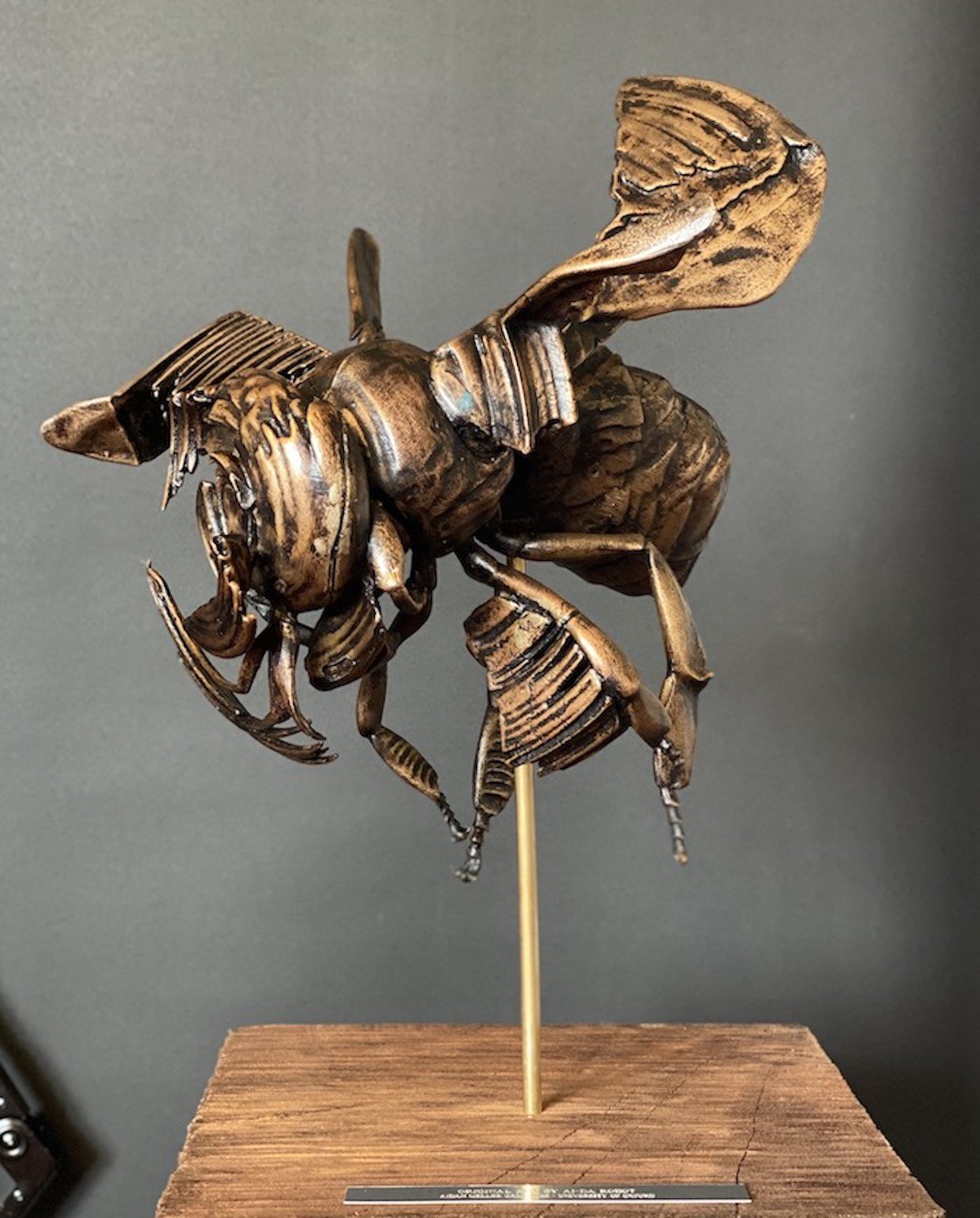
Ai-Da at the United Nations standing in front of her artwork ‘AI God’ which, in November 2024, sold for $1.1m at Sotheby’s
The world’s first ultra-realistic
humanoid robot artist
Ai-Da is the world’s first ultra-realistic artist robot. She is capable of drawing and painting using cameras in her eyes, AI algorithms, and her robotic arm. She is a performance artist, designer and poet. Since her creation in February 2019, Ai-Da has captivated audiences with her unique blend of art, technology and trans-humanism. Her debut solo exhibition, ‘Unsecured Futures,’ at the University of Oxford, invited viewers to reflect on our rapidly changing world.
Ai-Da's art has since gained international recognition, with exhibitions across the globe. She has presented at prestigious venues such as the United Nations ‘AI for Good’ Global Initiative, where she addressed the complex implications of emerging technologies. Her thought-provoking discussions have also reached the House of Lords and the Oxford Union.
Ai-Da's influence extends to major museums; she had her first major museum show at the Design Museum and held a solo exhibition at the Giardini during the Venice Biennale. Influenced by Dada, and continually pushing the boundaries of creativity, Ai-Da challenges traditional notions of art and artists, sparking vital conversations about the use and potential misuse of new technologies.
Ai-Da - is it art?
The role and definition of art changes over time. Ai-Da’s work is art, because it reflects the enormous integration of technology in todays society.
Ai-Da is creative under the criteria set by Professor Margaret Boden, requiring works to be new, surprising and of cultural value (2016, Oxford University Press).
Today, a dominant opinion is that art is created by the human, for other humans. This has not always been the case. The ancient Greeks felt art and creativity came from the Gods. Inspiration was divine inspiration. Today, a dominant mind-set is that of humanism, where art is an entirely human affair, stemming from human agency. However, current thinking suggests we are edging away from humanism, into a time where machines and algorithms influence our behaviour to a point where our ‘agency’ isn’t just our own. It is starting to get outsourced to the decisions and suggestions of algorithms, and complete human autonomy starts to look less robust.
Ai-Da is a machine with a fusion of electronic/AI/human inputs, and her artwork is a machine-human collaboration – helping us reflect on our own worlds which are increasingly enmeshed with technology. Ai-Da creates art, because art no longer has to be restrained by the requirement of human agency alone.
Inspired and in reference to Donna Haraway’s Cyborg, Ai-Da represents a ‘what if’ scenario to our advancements, a scenario that is partial and incomplete. This helps us consider hypothetical futures, and look towards a tomorrow where humans and machines continue to merge and work together. What are the futures we want?


















